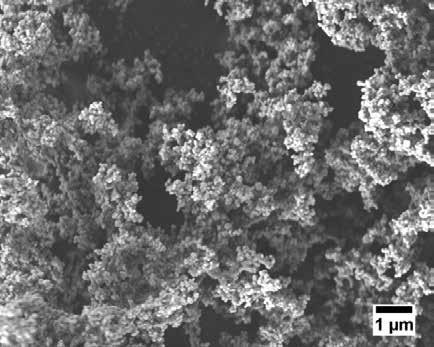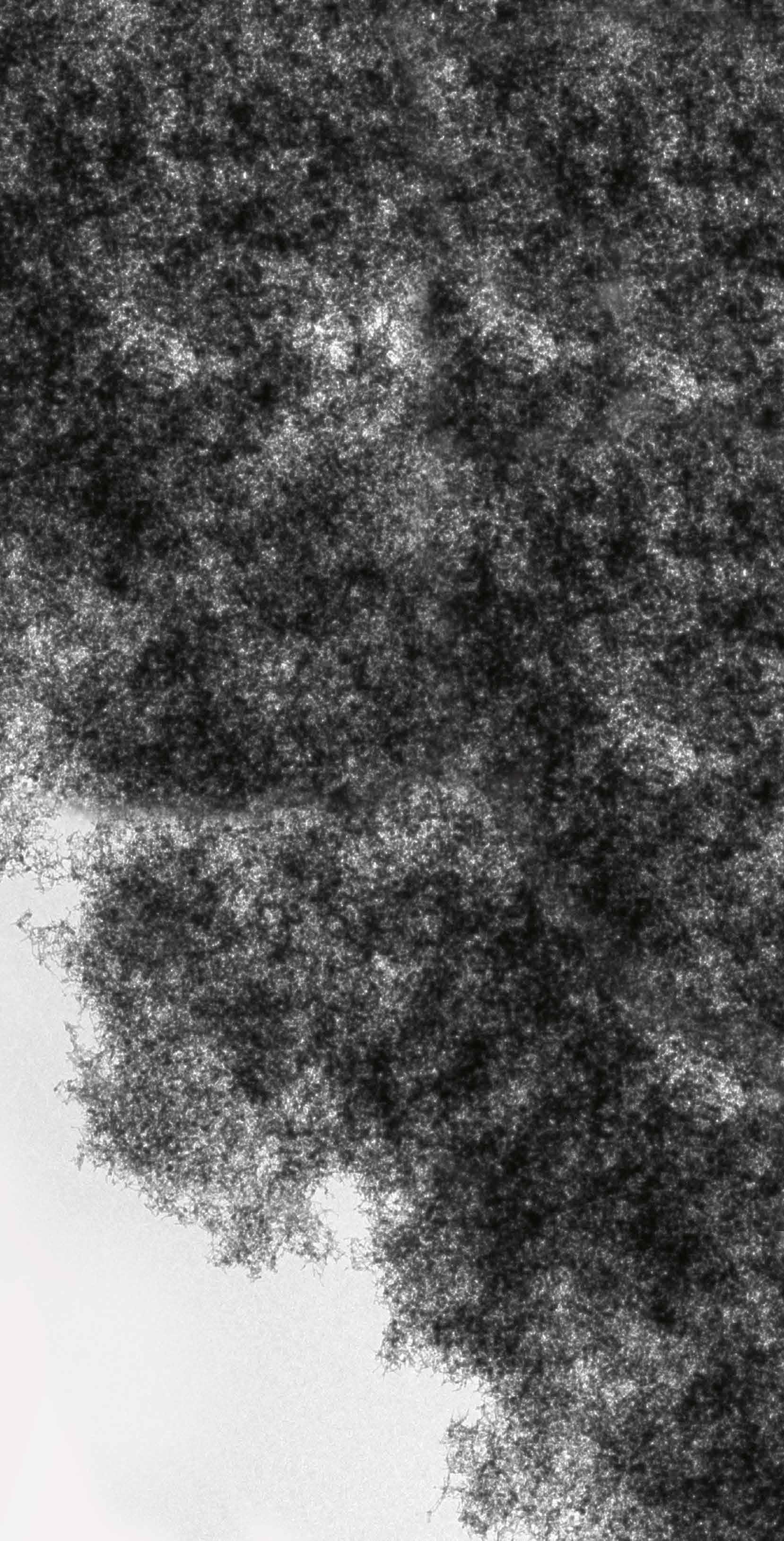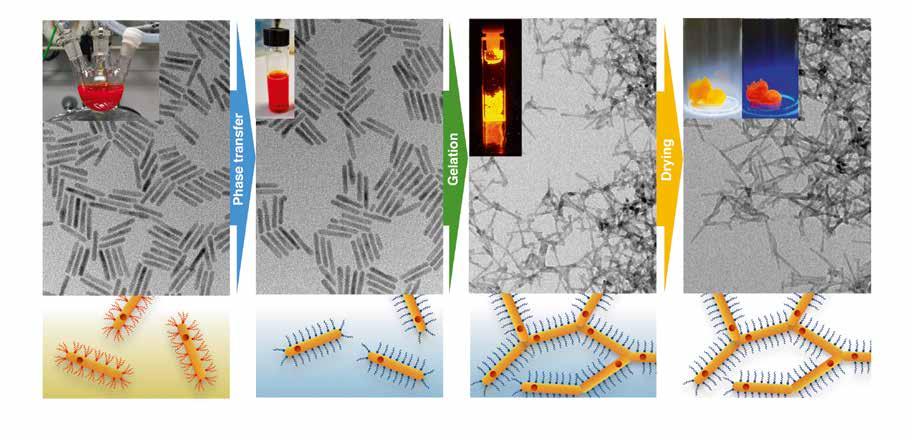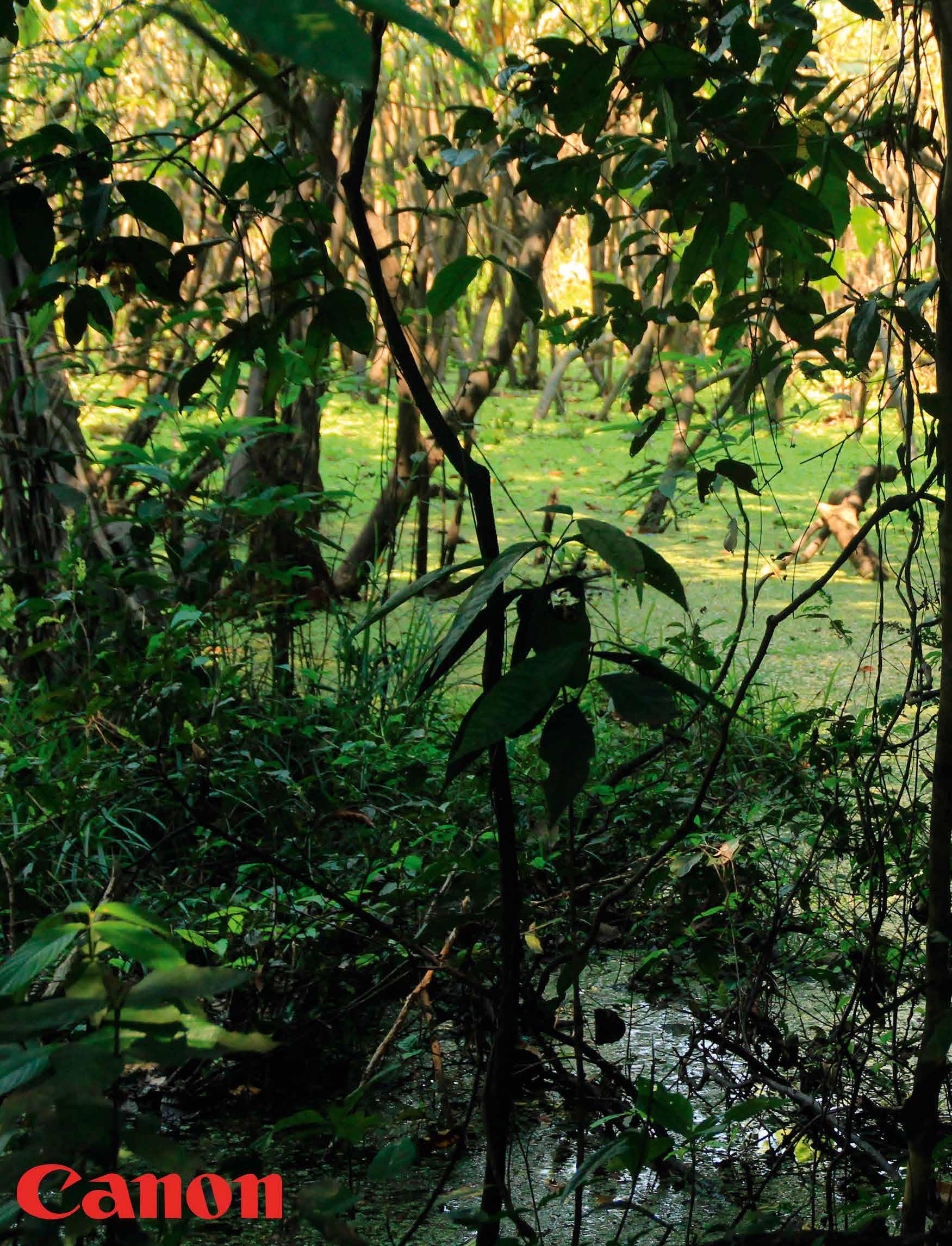
6 minute read
MAEROSTRUC
Building aerogels from nanocrystal foundations
Extremely lightweight, porous aerogel structures prepared from semiconductor nanorods under UV (left), white light (middle) and daylight (right) illumination.
Colloidally synthesised nanoparticles may have interesting properties, such as photoluminescence or superparamagnetism, and interactions between them may lead to the emergence of other properties. We spoke to Professor Nadja Bigall about the work of the MAEROSTRUC project in using these nanocrystals to develop multi-component aerogels.
There are several methods of producing aerogels and hydrogels, synthetic materials that are widely used in the commercial sector. While the majority of aerogels are still produced using relatively well-established methods, around 15 years ago a new approach was developed that involves the use of colloidally synthesised nanoparticles. “First you make a stable colloidal nanoparticle solution, and the colloidal nanocrystals in there may have some very interesting properties. They might be photoluminescent for example, or have superparamagnetism,” explains Nadja Bigall, Professor for Functional Nanostructures at Hannover University. “Now you have these nanoparticles with interesting properties, and you can look to gelate them, to make them into a gel.”
MAEROSTRUC project
This is a topic which lies at the heart of Professor Bigall’s work in the MAEROSTRUC project, an ERC-backed initiative in which the overall aim is to make multi-component aerogels from nanocrystal building blocks. Researchers are able to develop the nanoparticles in a controlled way, which provides a solid foundation to then develop multi-component aerogels which combine the properties of their building blocks with new properties. “First we make these particles using state-of-the-art colloidal synthesis - we




Core-shell structured aerogel networks based on elongated semiconductor (top, middle) and spherical noble metal nanocrystals (bottom). can achieve a high degree of precision over their shape, size and composition. Then we use these particles and look to find ways to make networks out of them,” outlines Professor Bigall. “We compare the properties of the building blocks to those of the assembled system, and investigate whether any new properties have emerged.”
A number of sophisticated techniques are being used in the project to first characterise the properties of the different nanocrystals that have been developed, including absorption spectroscopy, emission spectroscopy and spectroelectrochemistry. This will enable researchers to build a deeper understanding of the optical and electronic properties of the different nanocrystals, such as how they absorb light, emit it, and how they conduct charge carriers, then new properties may emerge when they come together to form part of a bigger structure. “If the nanoparticles come close to each other, they can interact in certain ways, and this can lead to the emergence of new physico-chemical properties,” says Professor Bigall. “We want to find out how this happens through analysis of the structure-property relationship. Can we somehow conduct and control this?”
The nanoparticles themselves can be designed in such a way that they have certain optical properties, which can then be tuned and modified when they are inter-linked with
each other through defined contact points, which Professor Bigall describes as microstructuring. Professor Bigall and her colleagues in the project are also investigating how they can make objects with certain shapes in the macroscopic domain. “We are really working on these three levels – on nanostructuring, microstructuring, and macrostructuring,” she explains. The nanoparticles themselves are typically around 10 nanometres in length, and there might be different domains in each crystal. “For example, you might have one metal domain and one semi-conductor domain. That is the nanostructuring level,” outlines Professor Bigall.
Aerogel synthesis
Researchers in the project aim to develop effective routes to synthesise aerogels and hydrogels, and to effectively tailor and control their properties. The project is only around halfway through its funding term, yet significant progress has already been made towards these wider objectives. “We were able to synthesise a gel that was mechanically more stable. We achieved this by growing a very thin silica shell, just a few nanometres thick, around these networks of nanocrystals,” says Profess Bigall. This shell essentially insulates the nanoparticles and improves mechanical stability, providing the conditions for Professor Bigall and her colleagues to investigate the effect of contact between nanoparticles. “We can either couple or decouple the building blocks within the network, by growing this shell before or after synthesis,” she explains.
The next step beyond this is to then examine the resulting structures, with researchers seeking to gain deeper insights into the relationship between the nano- and microstructure of the material, and its overall macroscopic properties. A clear relationship between the nano/micro structure of the material and its optical properties was identified in a recent research paper, while further investigation could point the way towards some interesting developments in future. “One aspect of the project is about how you can make very electrically conductive networks of nanoparticles, so this could be interesting for the development of supercapacitors for example. It could also be interesting for solar cells and
If nanoparticles come close to each other, they can interact in certain ways, and this can lead to the creation of new properties. We want to find out how this is happening through analysis of the structure-property relationship.
Can we somehow conduct this?
areas like photocatalysis,” says Professor Bigall.


“However it will take a lot of time to move towards any commercial applications.”
Research is largely fundamental in nature at this stage, with Professor Bigall and her colleagues investigating how these nanocrystals can be inter-linked to form macroscopic objects with specific, wellcontrolled properties. While commercial, practical applications arising from the project’s research are still a fair way off, Professor Bigall believes their results will open up new avenues of investigation. “The results will have an impact in certain areas of materials research. However, we’re engaged in fundamental research at this point,” she says. There is enormous scope for further investigation, and Professor Bigall is keen to continue her research in this direction in future. “There is much more work to do before we understand how to synthesise these new materials and control their properties. We have only scratched the surface so far,” she stresses.
MAEROSTRUC Multicomponent Aerogels with Tailored Nano-, Micro-, and Macrostructure Project Objectives
Synthetic routes for nanostructuring, microstructuring and macrostructuring nanocrystal hydrogels and aerogels will be developed in the MAEROSTRUC project. Nanostructuring involves advancement of colloidal nanocrystal synthesis as well as postsynthetic gel modifications. Microstructuring involves synthesizing multicomponent gels with defined contact points of the materials and intercalating multicomponent gels. Macrostructuring involves implementation of the gelation techniques into 3D printing, and gel deformation by external triggers and will enhance the applicability of gels.
Project Funding
ERC Starting Grant (MAEROSTRUC): Grant agreement 714429 • Overall budget:€ 1 499 769
Acknowledgment
Thank you to Dr. Daniel Zambo and Pascal Rusch for providing the images contained within this article.
Contact Details
Prof. Dr. rer. nat. Nadja C. Bigall Professur für Funktionale Nanostrukturen Insitut für Physikalische Chemie und Elektrochemie Leibniz Universität Hannover Callinstr. 3A 30167 Hannover T: +49 511 762 14439 E: nadja.bigall@pci.uni-hannover.de W: https://www.pci.uni-hannover.de/de/ forschung/arbeitsgruppen/
Professor Nadja Bigall
Nadja Bigall is Full Professor for Functional Nanostructures at Leibniz University in Hannover. She previously held post-doctoral positions at several different institutes across Germany and Italy before taking on her current role.






